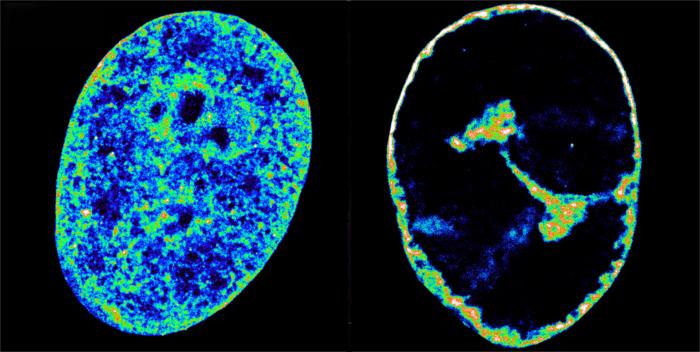The cold sore-causing Herpes Simplex Virus (HSV-1) hijacks human cells and reconfigures its DNA within just an hour after infection, according to a new study that may help tackle the pathogen.
Viruses are dependant on their hosts for replication, and upon infecting cells they tend to take over its cellular machinery to make new copies of themselves.
Scientists have now found that the herpes virus not only hijacks its host’s genome, but tends to reorganise the entire internal structure of the cells it infects within an hour after infection.
Two out of every three people under the age of 50 live with HSV-1, and once infected, they have the virus for life.
Although most cases are asymptomatic or manifest as mostly benign but recurrent cold sores, in rare cases the virus can cause blindness or life-threatening disease in newborns or those with compromised immunity.
Recent research also suggests there could be a link between herpes infection and dementia in older adults.
The new study, published in the journal Nature Communications, found that HSV-1 reshapes the human genome’s structure, making it compact and dense so that the virus can access host genes most useful for it to reproduce.
This finding could lead to new treatments to control the virus, which infects nearly four billion people worldwide, researchers say.
“HSV-1 is an opportunistic interior designer, reshaping the human genome with great precision and choosing which bits it comes into contact with. It’s a novel mechanism of manipulation we didn’t know the virus had to exploit host resources,” said Esther González Almela, first author of the study.

While previous studies have suggested that HSV infection leads to compacting and reshaping host chromosomes, it remained unclear whether it was a side effect of the cold sore virus infection or caused directly by the pathogen itself.
The latest study is the first to prove that HSV-1 reshapes the human genome deliberately and within hours of infection.
Researchers also found that blocking a single host cell enzyme – topoisomerase I – completely blocked the cold sore virus’ crucial ability to rearrange the human genome.
“In cell culture, inhibiting this enzyme stopped the infection before the virus could make a single new particle,” said Pia Cosma, another author of the study.
“That gives us a potential new therapeutic target to stop infection,” Dr Cosma said.
In the study, scientists used super-resolution microscopy to peer into ultra small cell structures just 20 nanometres wide, which is around 3,500 times thinner than a strand of hair.
They combined this with another technique that reveals which bits of DNA are touching inside the nucleus.
These techniques showed that the herpes virus’ hostile takeover begins within the first hour, with the virus hijacking a key human enzyme – RNA-polymerase II – to synthesise its own proteins.
Just three hours after infection, the virus causes a sizeable fraction of molecules involved in human DNA replication to abandon the cell nucleus and enter viral replication compartments.
The wholesale theft causes a collapse of any activity across the host genome, which then gets crushed into a dense shell just 30 per cent of its original volume.
Scientists hope the latest findings can help address the global health challenge posed by HSV-1 due to its prevalence and ability to cause recurrent outbreaks.




